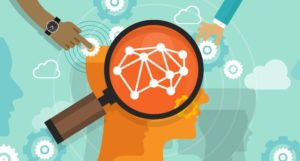
What is Behavioral Data, and Why Should Businesses Use It?

What is behavioral data? Put simply, it’s what people and machines do. And with millions of connected devices – including smart phones, wearables, home appliances and more – in use every day, businesses now have unprecedented access to rich, granular behavioral data that can describe how people perform an increasing range of activities.
Think about it. Nearly every aspect of our lives is now connected digitally, from apps to collaborate with coworkers or manage our health, to the ways we meet new people and fall in love.
But gathering data that describes how employees, partners and customers engage across different digital platforms is just the beginning. Organizations today have a massive opportunity to utilize behavioral data to inform product development, provide more personalization and enhance services in a plethora of new ways. So, for those looking to harness the power of behavioral data, here are a few best practices that any business can implement.
Who Should Use Behavioral Data?
Behavioral data can be a critical source for insights across a plethora of industries. For instance, retailers and ecommerce marketplaces can use behavioral data to gain a better understanding into how their customers purchase and use goods, what information influences their decisions and how they compare different options.
Likewise, media companies and streaming providers can create detailed profiles of how users engage with different content at different times in the day, what they are most interested in, and what they are not. And B2B SaaS companies can increase adoption and reduce churn by building a picture of how different members of prospect organizations trial, learn and ultimately decide on using their technology.
The applications for behavioral data are still expanding, and the use of it will likely mature across various consumer and B2B industries.
Driving AI with Quality Behavioral Data
Behavioral data can granularly describe how people make choices and capture the different elements that influence those choices down to extreme detail. This makes it ideal for use with artificial intelligence (AI) applications, which can rapidly analyze behavioral data to quickly pinpoint the most important key factors driving decisions.
When combining AI and behavioral data, organizations gain a new level of insight into customer preferences and can actively influence consumer choices with better, more personalized services. To provide just a few examples of real-life benefits, behavioral data and AI combined can power lead scoring, optimize ad yield and identify and prevent fraud. It can also enable organizations to improve dynamic pricing, drive effective promotions, spot and prevent churn, and even maximize the basket and lifetime value of browsers.
Using behavioral data, just a single data set can drive a limitless amount of use cases for better understanding customers, which can increase retention, acquisition, and lifetime value. But despite the benefits behavioral data can bring, most companies do not use and collect it efficiently. Why might this be?
Using Behavioral Data Effectively
There is more data, with more variety, than ever before for businesses to collect and use. In fact, the sheer amount can be overwhelming. To deal with this, many organizations today only rely on packaged solutions, like Google Analytics, to manage their behavioral data. The issue with this strategy is that packaged solutions are designed to focus only on certain specific functions for a certain set of industries. Consequently, a team using a packaged solution may develop tunnel vision, meaning they lose sight of opportunities due to preset ideas about what behavioral data describes and how it should be processed and structured.
Likewise, while certain packaged tools are excellent for quick and easy reporting, they often are not made to enable the integration of different data sources. This can mean organizations are not able to see the entire picture, and will be unable to meaningfully impact overall profits and revenue.
If an organization wishes to leverage AI and behavioral data to improve their customer understanding and interactions, they will need to shift gears to focus on collecting behavioral data that is fit for their specific needs and requirements. In many cases, to attain this level of customized data management, organizations should consider how to tap into a dedicated behavioral data platform that provides greater control and flexibility on how data is collected and used.
What Should You Expect from a Platform to Manage Behavioral Data?
Businesses often start using behavioral data to power a simple set of uses, and then evolve these uses over time to focus on more mature strategies for driving better performance. As businesses move from simpler to more complex approaches, packaged solutions become much less effective, and the benefits of a behavioral data platform become more obvious. But what should you look for in a behavioral data platform?
When considering a platform to manage behavioral data, organizations may want to consider a tool that can create, validate and deliver high-quality behavioral data in real time. More vitally, a platform should also provide the flexibility to enable organizations to evolve their behavioral data as they mature in data sophistication – i.e., using data to power more use cases and change each use case based on evolving customer experiences.
It’s also helpful if a behavioral data platform can assure data is both complete and accurate at a high level. Access to richer, better structured data will enable organizations to use AI models for more predictive power.
As an example, consider how marketers map customer journeys to optimize ad spend. In the beginning, a business may want to use a packaged solution to linearly track the last and first touch of a customer on a website – simple enough. But, over time, organizations may want to understand how different campaigns across different channels work with one another to increase the chance of sales. To do this, a business must understand a complete customer journey across online, offline and many different channels, including ad interaction and exposure for each prospect as well as how various algorithms are working collectively. By using a behavioral data platform, data can be structured and formatted in a consistent, suitable manner to be fed into different models to do this sort of analysis.
Likewise, a behavioral data platform may help with customer targeting if it provides rich, granular, user-level data. This type of data will provide intricate detail beyond just what content and products users have engaged with, but also into how deep customer engagements are and in what context they make decisions. Then, more detailed info can be fed into machine learning (ML) models to make more accurate and timely predictions about what content, products and promotions certain customers are interested in.
Behavioral Data for the Future
It used to be that the company with the best product would be the de facto winner in the marketplace. This is not so in today’s digital world, where organizations often compete on customer understanding and their data analysis methods to get there. Behavioral data coupled with AI and ML applications are the keys to win in this environment, and by factoring in what behavioral data platform works best for one’s company into planning, organizations radically improve their chances for success and better customer relationships.
About the author: Yali Sassoon is a co-founder of Snowplow, where he gets to combine his love of building things with his fascination of the ways in which people use data to reason. He has a BA in Natural Sciences and an MPhil in the History and Philosophy of Science, and further developed as a Strategy & Operations Consultant (at PwC, Bestshore and Keplar LLP) and a Data Analyst at OpenX.
Related Items:
Data Science Meets Behavioral Science
Behavior Analytics Looks to Leapfrog SIEMs
Journey Analytics: A Killer App for Big Data?

































